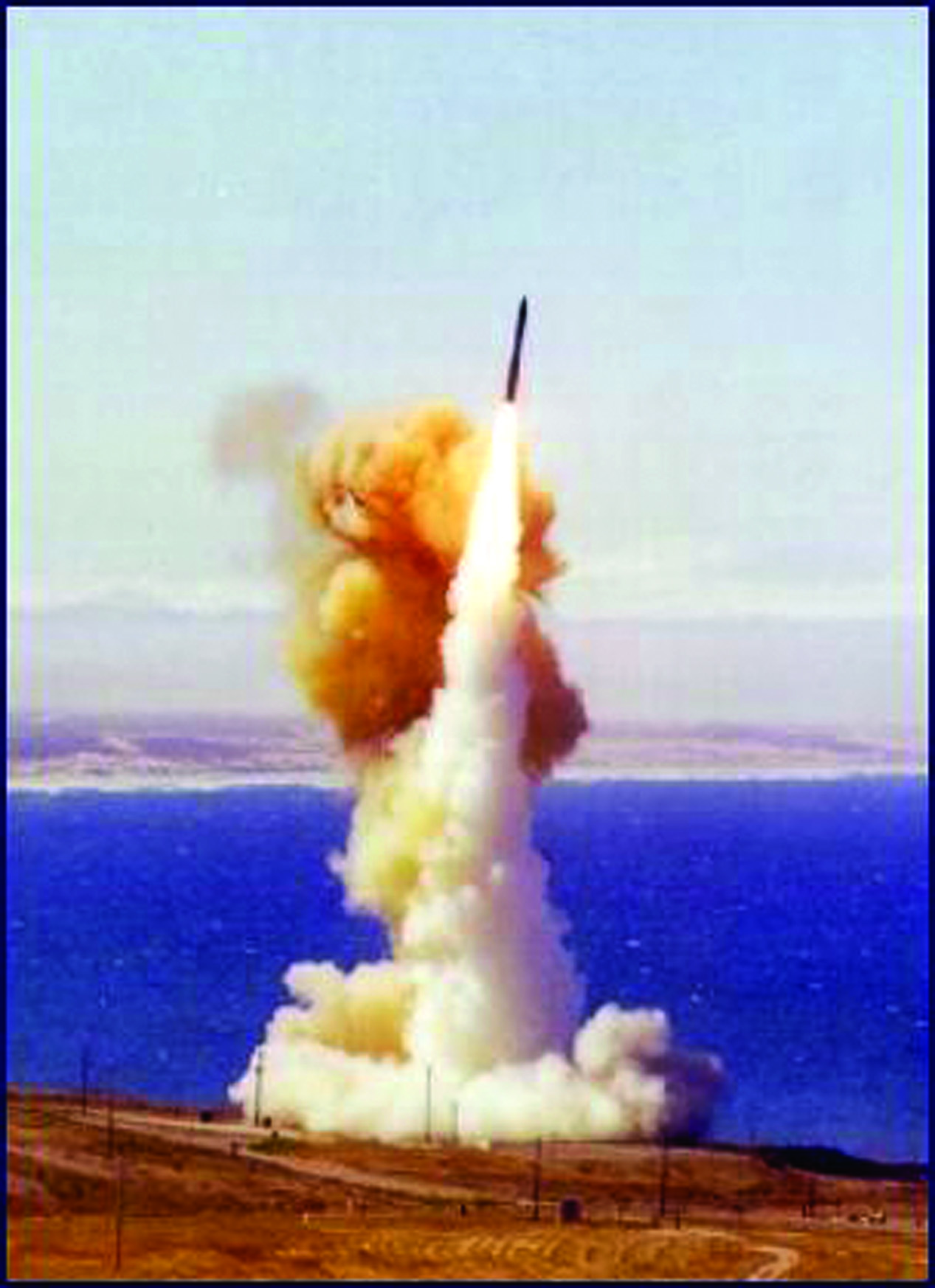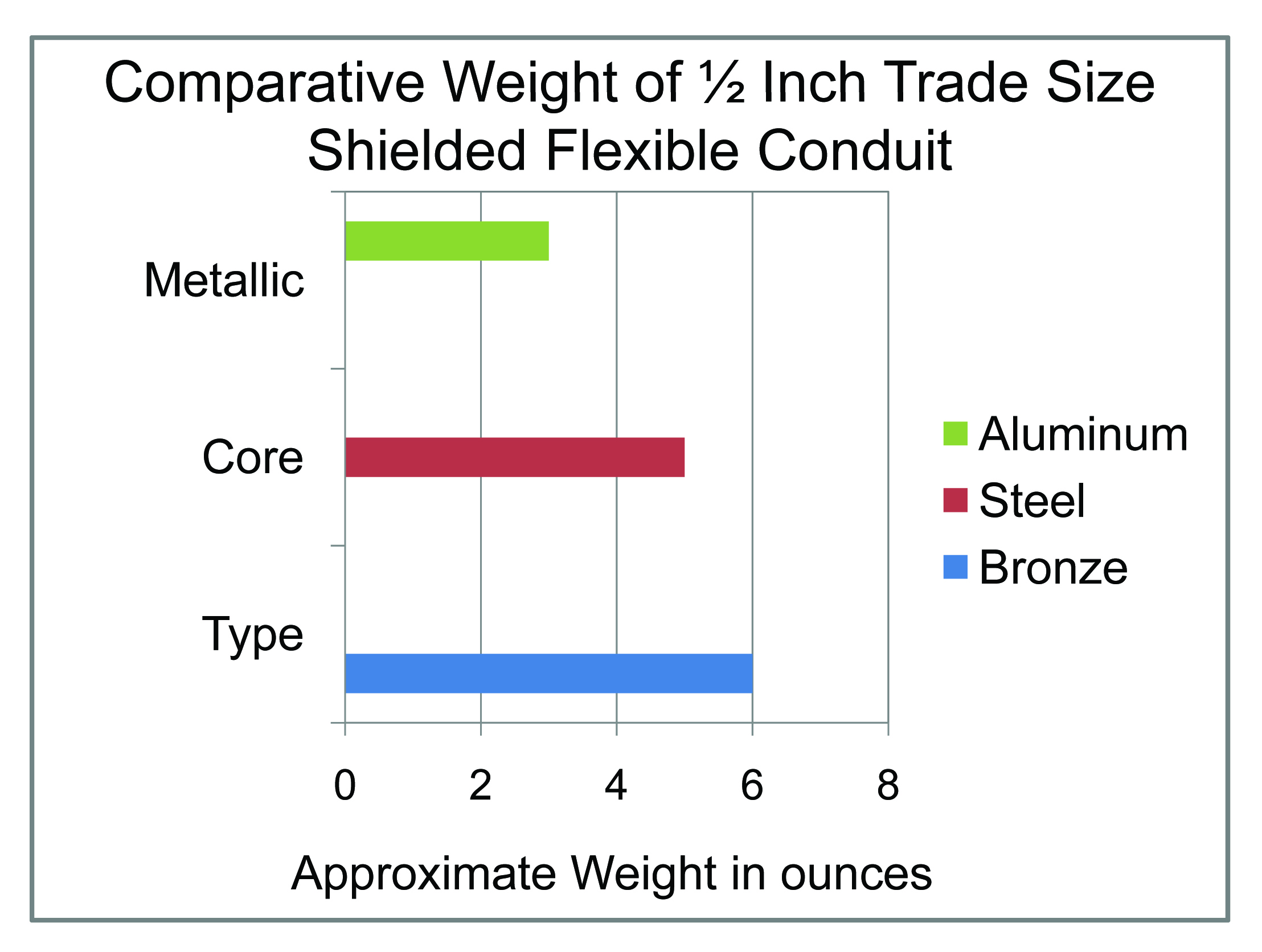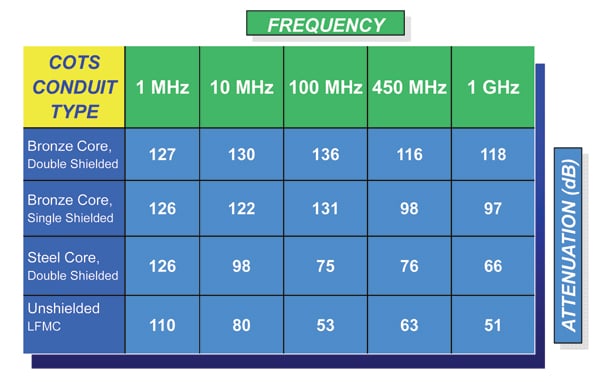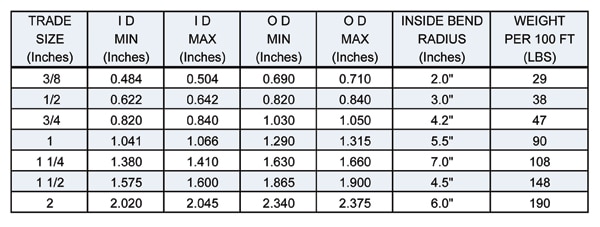Applications, electrical and physical performance, termination and installation factors of shielded flexible conduits.
Linda Sardone, Zero Ground
Electronic solutions for military and government equipment and installations are expanding rapidly, and the need for supplemental shielding of cable runs via conduit is moving beyond traditional applications requiring MIL SPEC flexible conduit systems. The good news for electrical, design and shielding engineers with program requirements or incentives to incorporate Commercial Off the Shelf (COTS) components is that a relatively new alternative to MIL SPEC flexible conduit systems is gaining acceptance. Shielded flexible conduits are being specified in land, sea and flight environments and in fixed and mobile applications where their form/fit/function meets the requirements of the application, and where MIL SPEC is not required. Applications, electrical and physical performance, termination and installation factors of shielded flexible conduits is discussed, and compared with long-available commercial commodity products Liquid Tight Flexible Metallic Conduit (LFMC) and Rigid Conduit, commonly called Schedule 40.

EMERGING COTS APPLICATIONS FOR SHIELDED FLEXIBLE CONDUITS
A function of any conduit is physical protection of the cable run internally. But where EMI/RFI and other types of interference are a concern, shielded conduit is an effective component in the interference mitigation system. Power and signal cables are run through these conduits where electrical interference with sensitive electronic circuits such as communications, radar and data transmission is a concern. The two broad categories of interference related to cable are egress and ingress. Interference by egress occurs when cables radiate interference that compromises the performance of nearby sensitive equipment. Examples of egress are when power cable must be run in close proximity to data cable or communications or control equipment. Interference by ingress occurs when unwanted external interference couples onto insufficiently shielded cable. Examples of ingress are when a generator is operating near data cable or when either data or power cables are exposed to external threats, such as near strike lighting or an electromagnetic pulse (EMP) event.

EMP concerns are in the news regularly, with recent attention focused on vulnerability of military, utility and communication systems to the effects of an EMP event, such as an E-bomb attack. Potentially non-lethal, although still highly destructive, an E-bomb attack would disable electrical and electronic equipment in the affected area. When planning for critical equipment protection, cable runs through shielded flexible conduits are an option to be considered by EMI and electrical engineers along with filters, enclosures and other specialized shielding materials.

Shielded flexible conduits have been specified for installation in secure ground support facilities for building control and communications systems. Mobile ground applications include tactical, communications, supply and shelter systems. Although many Naval installations require MIL SPEC conduit, shielded flexible conduit is in use below decks in selected electrical systems. Aerospace usage is limited to short length applications such as camera signal and power, due to the weight of current metallic cores used in shielded flexible conduits.
Applications bridging defense and commercial markets are antennas, large scale test and detection equipment, test enclosures, and large pumps.

DEFINING THE SHIELDED FLEXIBLE CONDUIT ALTERNATIVE
Shielded flexible conduit uses a flexible metallic core of bronze or steel covered with a tinned copper braid as the second layer of shielding as in Figure 3. This shielded core is typically outer jacketed with PVC or with a low smoke, zero halogen compound, such as polyurethane, which is often required in military and government applications for its safety characteristics when installed indoors or in closed environments where personnel are working. Shielded flexible conduit is designed to be compatible with commercial liquidtight flexible conduit fittings – Figure 4 – which provide shield-to-ground (shield-to-drain) connections when terminated as designed to a bulkhead or metallic enclosure. These fittings are cost-effective and readily available in galvanized steel. Additional metals and finishes are offered in most common trade sizes, including stainless steel fittings for rust resistance. These commercial fittings terminate in seconds without special tools and are designed to be removable for maintenance of internal cables.

WHAT ENGINEERS WANT TO KNOW
Published shield effectiveness testing for shielded flexible conduit in the frequency range from 1MHz–1GHz has been verified by major government subcontractors. As seen in Figure 5, shielded bronze and steel flexible core conduits deliver substantially more shielding effectiveness than unshielded commodity steel LFMC.
The size range for COTS shielded flexible conduit is 3/8-inch to 2-inch, compatible to U.S. commercial trade size dimensions, which differ from MIL SPEC sizing. (See Figure 6).
Where MIL SPEC circular back shell connectors are required, adapters are available to make the transition from commercial trade size fitting to MIL SPEC connector.
Shielded flexible conduit as a situational problem solver is used as a tool by numerous test facilities to troubleshoot EMC concerns. Where testing has isolated a problem area of interference, shielded flexible conduit can be utilized in the specific area impacted by emissions, preventing a larger redesign of the entire cable run. Changes in MIL-STD-461F testing, which limit integral shielding of power cables, may lead designers to choose shielded flexible conduit as a designed means of isolating power cables from signal cables in the field, rather than relying on anticipated field conditions which may not materialize. Use of readily available standard cable types run through shielded flexible conduit may also be a practical option versus designing in small quantities of custom shielded cable with typically some combination of high minimum quantities, long lead times, higher prices and one or more redesigns as program requirements evolve.
Installation time can impact both project budgets and installation schedules. Prime contractors have confirmed that shielded flexible conduit installs in half the time of rigid conduit. Custom MIL SPEC connectors may take considerable time to attach, versus seconds for commercial fittings on shielded flexible conduit. To minimize waste, continuous lengths of 1,000 feet or more are typically available, depending on shielded flexible conduit size. Shielded flexible conduit will negotiate bends within its stated bend radius, although it is not intended for continuous flex applications. Shielded flexible conduits may be designed as liquid tight (water resistant), but are not intended for submersion.

COMMERCIAL AND INDUSTRIAL APPLICATIONS
In the mid 1990s, CE compliance became mandatory for many products sold in Europe, and significantly reduced the allowable amount of EMI/RFI emissions from electrical apparatus. Shielded flexible conduits have assisted various commercial equipment manufacturers with reducing EMI/RFI emissions related to cabling, in order to attain CE certification.
Industrial applications include medical diagnostic equipment, mobile sensor antennas, large scale test and detection equipment, test enclosures, large pumps and the growing Free Space Optics (FSO) market. Shielded flexible conduit is also utilized in wind turbine controls, industrial automation (robotics), broadband antennas, locomotive engines, and in the highest end of custom home theater installs.

COMPARING THE ALTERNATIVES
When compared with LFMC, shielded flexible conduit’s superior COTS shielding effectiveness makes it the
preferred choice where MIL SPEC is not required, but has typically been used in the past. Although rigid conduit components are inexpensive, they incur higher labor costs to install, particularly in tight spaces. Additionally, cable runs installed in rigid conduit are difficult to access for service versus shielded flexible conduit.
CONCLUSION
Conventional wisdom supports designing for EMI/RFI protection as a more cost-effective solution than retrofitting an existing system. Yet the need for the EMI/RFI protection of sensitive electronics in military, government and civic environments suggests that both new design and retrofit will be equally important tasks for many years. Electrical, design and shielding engineers have the option of evaluating readily available COTS conduit alternatives where MIL SPEC is not required. COTS alternatives, particularly shielded flexible conduit, may deliver electrical and physical performance to satisfy the requirement, with shorter lead times and cost savings potential in components, installation time or both.
Linda Sardone is the Sales & Marketing Manager for dBzSHIELD® shielded flexible conduits at Zero Ground LLC. In her current role, Linda is responsible for developing new shielded conduit products and accessories, expanding the markets for dBzSHIELD, and overseeing the network of distributors and manufacturer’s reps for Zero Ground. Linda’s background includes 25 years of sales and sales management experience in the specialty cable industry. She can be contacted at sardone@zero-ground.com.
